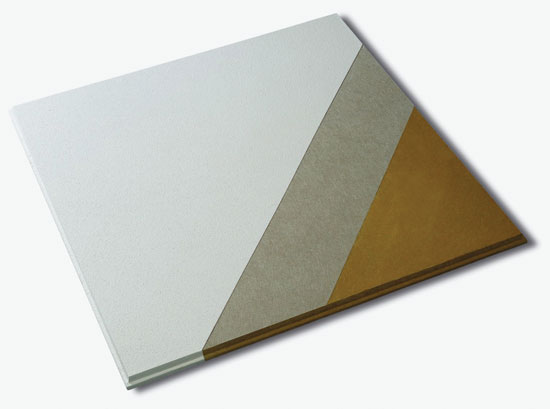The Value of Stone Wool Acoustical Ceilings
Learning Objectives:
- Differentiate between the properties of natural material-based stone wool ceiling tiles and other acoustical ceiling materials.
- Analyze and explore the fundamentals of interior acoustical design treatment and their relationship to green buildings and sustainable design.
- Assess the multiple qualities of stone wool acoustical ceilings that can contribute to green and sustainable building design.
- Recognize and identify the acoustic needs of different design applications and the attributes to look for, including contributions to green building certification.
Credits:
Acoustical suspended ceilings are commonplace across many building types. Since the 1950s, they have been a preferred design choice due to their ability to conceal but still be accessible to HVAC ductwork, electrical wires, plumbing pipes, phone cables, security lines, and other components of commercial buildings. These suspended, interconnected ceiling systems use a metal grid comprised of cross tees and main runners in various profile sizes. Within that grid, acoustical tiles of different types provide the aesthetic and sound properties desired for a particular space. Although architects often think of traditional materials such as mineral fiber or fiberglass for those ceiling tiles, there is another option where the tiles are fabricated from natural stone wool. This product has impressive characteristics for fire rating, strength, acoustics, and sustainability, among others.
Overview: Stone Wool Ceiling Tiles
The idea of producing stone wool has its origins in the volcanic eruptions on the islands of Hawaii. Early native inhabitants discovered woolen-like strings of stone lying on the ground following these eruptions and attributed it to hair from the goddess, Pele. Modern geologists have identified it as primarily igneous basalt, the earth's most abundant bedrock. This natural stone wool has thus become understood to be formed by the rapid cooling of lava from eruptions on the sea floor which creates the thin strands of stone. The strands flare out randomly creating a non-directional pattern that provides some unique and valuable characteristics related to strength and stability. The recognition of the value of this stone wool has led producers to emulate and imitate the process to create building products out of manufactured stone wool.
Manufacturing Process
As a product, stone wool combines the traits of rock with the characteristics of typical fiber-based building products. The manufacturing process is based on using natural, inorganic basalt to create natural fibers with no blowing agent used. In addition, a number of other recycled secondary materials (e.g. sewage sludge ash from treatment of wastewater or residues from metal industry processes) are used to add to the overall properties of the finished product.

Photo courtesy of ROCKFON
Stone wool ceiling panels are a proven alternative choice for many different and exciting building spaces.

Photo courtesy of ROCKFON
Stone wool is made from natural volcanic basalt plus recycled secondary products and reclaimed material during manufacturing.
The typical production process for stone wool begins with the fusion of the volcanic basalt at a temperature of 2,732°F (1,500°C). The rock, secondary materials, and coke are automatically fed from the top of a cupola-style furnace. The melt runs out of the bottom of the furnace and onto a spinning machine, where stone wool is literally spun. Minor amounts of organic binder and oil are added to bind the stone wool together and to increase water repellency. The wool is then collected on a belt conveyor so its structure and density can be adjusted according to its final use as either a rigid panel product or a batt-style product. Either way, the wool fibers remain non-directional which is important for achieving many of the desired performance characteristics.

Photo courtesy of ROCKFON
Ceiling tiles made from stone wool have a non-directional acoustical stone wool core that is covered with a mineral fleece layer and then finished with a smooth water-based paint that creates an easy-to-clean surface.










